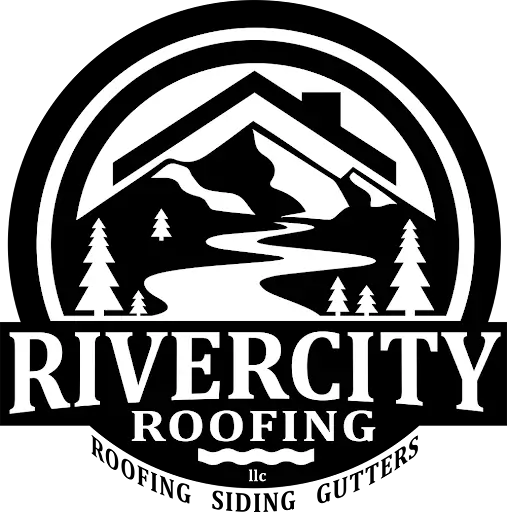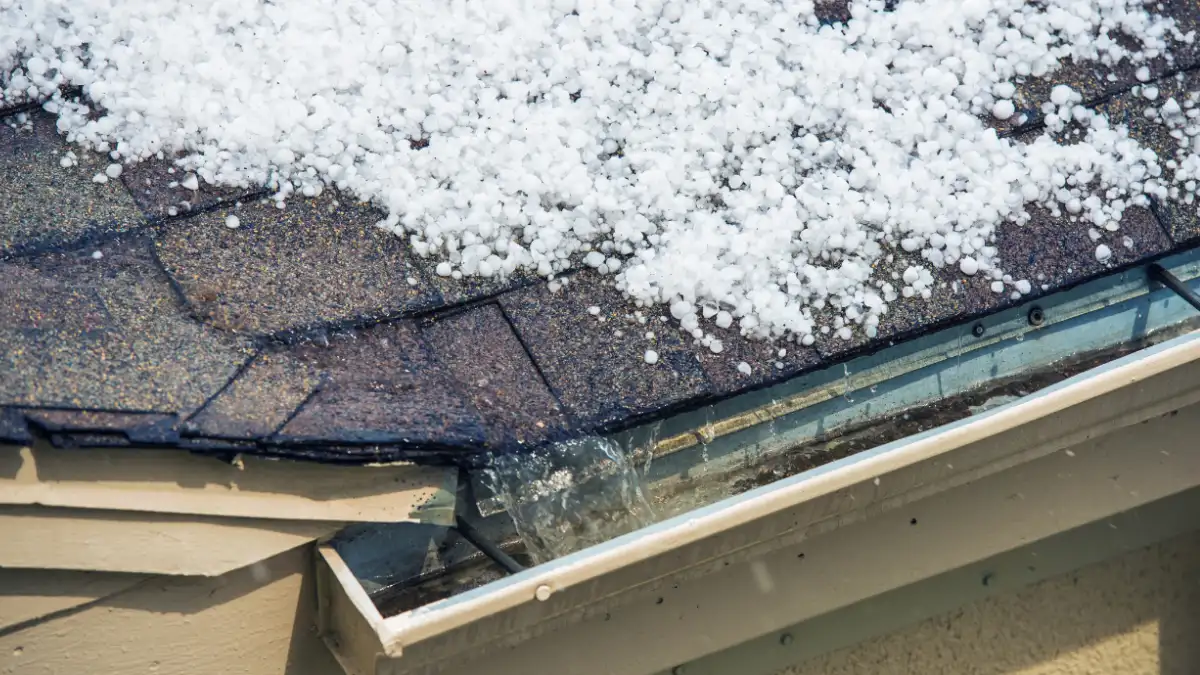Preventing the formation of ice dams in gutters is vital for any homeowner who values the repair and replacement costs of the roof, gutters, and the entire house. Usually, ice dams occur when the hot air from a room melts snow on a rooftop. This process of ice dam forming happens as the water from the melted snow travels down the roof until it reaches the edges and starts to freeze at the eaves. If the melted ice does not drain properly, it results in water seeping into the house, which can cause considerable damage.
This guide will address 10 thorough ways to avoid ice dams, with a special focus on insulation, ventilation, gutter upkeep, and other methods of prevention.
Understanding Ice Dams
Ice dams form in a situation where some sections of the roof are warmer, melting the snow, while the lower sections near the eaves are colder. These roof ice dams are ice ridges formed from melted snow that trap water on roofs. The water, which flows downward, freezes at the eaves, which are cooler and create a dam of ice. Once more melted snow is collected, it gathers behind the dam and quietly seeps into your roof shingles and into your home.
Definition of an Ice Dam
An ice dam is a ridge of ice that forms at the edge of a roof, typically near the gutters, and prevents melting snow from draining off the roof. This buildup of ice can cause water to back up behind the dam, leading to leaks, damage to walls, ceilings, insulation, and other areas of the home. Understanding what an ice dam is and how it can affect your home is the first step in effective ice dam prevention.
How Ice Dams Form on Roofs
Ice dams form on roofs when snow melts and flows down the roof, only to refreeze at the colder eaves and gutters. This process is often caused by warm air escaping from the attic or living spaces below, which melts the snow on the roof. As the water flows down the roof, it reaches the colder areas near the gutters and refreezes, forming an ice dam. This cycle of melting and refreezing can lead to significant ice buildup, causing water to back up and potentially seep into your home, leading to damage.
Common Causes of Ice Dams
Ice dams are commonly caused by a combination of factors, including:
- Warm air escaping from the attic or living spaces below: This heat loss causes snow on the roof to melt.
- Poor insulation or ventilation in the attic: Without proper insulation and ventilation, warm air can accumulate in the attic, raising the roof temperature.
- Clogged gutters or downspouts: Blocked gutters prevent proper drainage, leading to water buildup and ice formation.
- Heavy snowfall: Large amounts of snow increase the likelihood of ice dam formation as more snow melts and refreezes.
- Inadequate roof design or construction: Roofs with poor design or construction may have areas that are more prone to ice dam formation.
Factors that Contribute to Ice Dams
Several factors can contribute to the formation of ice dams, including:
- Heat loss from the home through gaps and cracks in the ceiling and walls: These gaps allow warm air to escape into the attic, raising the roof temperature.
- Exhaust systems, such as those in the kitchen or bathroom, that terminate just above the roof: These systems can release warm air directly onto the roof, causing snow to melt.
- Chimneys that allow heat to be transferred from the chimney into the attic space: This heat transfer can raise the attic temperature and contribute to ice dam formation.
- Inadequately insulated or leaky duct work in the attic space: Leaky ducts can release warm air into the attic, increasing the risk of ice dams.
Factors that contribute to ice dams include:
- Improper attic insulation: Insufficient insulation allows heat to escape from the living space through the roof, causing roof melts. This melted snow can run toward the gutters and refreeze at the colder eaves, leading to ice dams and potential damage under the shingles and into the home.
- Poor ventilation: The air warms the roof because it is unable to escape and gets trapped in the attic area.
- Clogged gutters: Water is unable to flow through structures, which means ice formation is encouraged.
Risks of Ice Damming
Water damage: Rain can get into your Attic, ceiling, walls, or insulation and you end up with mold, rot, and structural damage.
Roof damage: Due to ice buildup, shingles, roof decking, and flashing can be adversely affected.
Gutter damage: Pressure exerted by ice dams may cause the gutters to detach from the house, and this will entail hefty repair or even replacement. Subsequently, mitigating ice damages is an investment toward safeguarding your home against such risks.
In the long run, investing in ice dam prevention measures can prove beneficial, especially in terms of protecting one’s house from many of these hazards.
Free Roof Inspections. Fast. Reliable.
Is your roof ready to weather the storm? Dont risk property damage. Our free roof inspections provide expert analysis to identify potential issues before they become costly problems.
10 Effective Methods for Preventing Ice Dams
1. Enhance Insulation in the Attic
The first layer of protection from ice dams is insulation. With the right insulation in place in your Attic, there is less heat that can escape from the roof, preventing the melting of snow and ensuring that heat cannot reach the roof, causing the snow to melt.
Main approaches are:
- Increase levels of insulation: While choosing the material for attic insulation, select a dense product with a minimum thickness of 10 inches, preferably between 12 to 14 inches. Fiberglass or cellulose is good for attic insulation.
- Install insulation around light fixtures and vents: Poor insulation of such fixtures may cause heat loss in the house. Fit insulating covers for recessed lights.
- Look for missing places: Plug any hole that is around pipes, chimneys, or vents found in the house that let out warm air into the Attic.
2. Ensure Proper Ventilation
Proper ventilation is imperative for controlling the temperature inside your attic. An attic with good airflow remains relatively cooler, therefore reducing the difference in temperature between the upper and lower area of the roof and avoiding the risk of forming ice dams.
Common ventilation approaches:
- Install ridge and soffit vents: A ridge vent enables warm air to escape from the top of the roof, while soffit vents draw in warm air from the attic space below them.
- Install attic fans: These are helpful in the distribution of air within the attic so that things are made cooler and a regulated temperature is maintained within the attic ceiling compartments, helping eliminate chances of ice dams.
- Use ventilation passages: Employ baffles or ventilation chutes to avoid blockage of air flow between insulation and the roof deck thereby reducing the temperatures at the roof surface.
3. Prevent Air Leakage in Attic Spaces
Warm air leakage through the attic creates an imbalance in roof temperatures leading to heat loss. Sealing air leaks prevents this warm air from getting to the roof.
Here’s how:
- Fill spaces between chimneys, pipes, electrical wiring, and the attic floor using caulk or spray foam to seal these areas.
- Apply weather strips and insulations on all attic access doors or hatches to minimize heat loss through these inner areas.
- Inspect the perimeters of ceiling fixtures and fans for holes and depressions, sealing heat escaping up to the attic.
4. Use Heated Cables or Heat Tape
A specially designed and insulated cable (heat tape) is wrapped along the eaves, roof, and other areas where ice tends to build. Although this method does not address the source of the problem (lack of insulation or ventilation), it may allow homeowners to address ice damming issues in their houses for some time.
Here’s how to install them
- Install the cables in a zigzag pattern around the lower edge of the roof.
- In temperatures below 32°F, run the cables through the gutters and downspouts to keep them clear of ice.
- Use a thermostat controller to regulate the cables, thereby saving energy and avoiding overheating.
5. Keep Gutters and Downspouts Clear
A clogged gutter denies a smooth passage for water to flow and encourages the formation of ice. It is thus important to clean and maintain the gutters, so that water can always be channeled and flow away from the roof.
Key steps include:
- Remove any debris, such as leaves or sticks from spring and fall in order to clean gutters. Do it at least twice a year.
- Fit gutter guard systems in order to avoid obstruction of water flow caused by leaves and dirt.
- Ensure that gutters and downspouts are clean, and they should discharge water at least ten feet from your home’s foundation.
6. Install Ice and Water Shield
Ice and water shields are waterproofing barriers installed under the roof shingles. The main purpose of the shingles is to protect the building from water seepage whenever ice dams develop on the roof. This approach acts as a secondary layer of the defense system.
Here’s how it works:
- Install ice and water shields along the eaves of the roof, up to at least three feet, to have a barrier at the times that water flows under the shingles.
- It is recommended to mount the shield in the valleys, around the chimneys, and the skylights, which are actual areas where ice dams and leaks appear.
7. Check and Upgrade Roof Insulation
The layer of insulation right below your roof deck is of paramount importance as it ensures a moderate roof temperature. This is even more effective in the case of spray foam insulation because it can easily separate the warm house from the cold roof deck.
Strategies include:
- Consider closed-cell spray foam insulation: It fills gaps and has a better R-value of heat, improving energy efficiency.
- Treat areas of the eaves since they tend to be the coldest roof sections and are highly prone to ice build-up
8. Remove Snow from the Roof Safely
To mitigate ices dams, ensure you clear your roof of snow before it melts and refreezes at the roof’s edge. This however should be done gradually to prevent inflicting harm to the roof.
Methods include:
- Designed for use from the ground, a roof rake with a long handle is used to pull off snow from a roof. Do not stand on the roof to clear the snow, and do not use sharp instruments that may damage roof shingles.
- After each major storm, clear the snow clearance so as to prevent the melting of snow on the roof, which can lead to the formation of ice dams.
9. Install Drip Edges
Drip edges are metallic flashings installed along the edges of the roofs for water to be directed away from the eaves and into the gutter. They can also mitigate the chances of water getting underneath the roofing shingles due to the presence of ice dams.
Advantages include:
- Channeling water to the gutters: This helps avoid water standing at the edge of the roof or the formation of ice at the edge of the roof.
- Avoiding moisture penetration into the house: Drip edges can help prevent shingles from getting water, which can cause roof rot or leaks.
10. Consider Roof Replacement or Repairs
If your roof is old or damaged, you can fix it, including the sections that can encourage ice dams to form. The current roofing technologies and materials are superior in terms of heat resistance and protection against weather.
Key considerations include
- Upgrading to ice-dam-resistant materials: Materials such as standing seam metal roofs are less prone to ice dams.
- Ensure proper roof pitch and drainage: A steep roof pitch means that water and snow will slide off it rather than pile up.
Additional Prevention Measures
In addition to the measures mentioned earlier, there are several other ways to prevent ice dams from forming on your roof.
Add Soffit Vents for Improved Airflow
Installing soffit vents can help improve airflow in the attic and reduce the risk of ice dams forming. Soffit vents allow cold air to enter the attic and warm air to escape, which can help regulate the temperature of the roof and prevent ice dams from forming. Proper ventilation is essential for preventing ice dams, and soffit vents can be an effective solution.
It’s essential to note that while these measures can help prevent ice dams, they may not eliminate the problem entirely. Regular maintenance, such as cleaning gutters and inspecting the roof for damage, is still necessary to ensure the longevity of your roof and prevent ice dams from forming. By combining these additional prevention measures with the strategies mentioned earlier, you can significantly reduce the risk of ice dam formation and protect your home from potential damage.
Conclusion
Avoiding ice formations in gutter systems is essential in order to safeguard your home from water seepage, roof damage, and expensive repairs. Since the primary causes of ice damming include poor insulation, inadequate venting, and gutters that are not cleaned, these can be solved, and the risk of ice damming can be reduced. Begin with the insulation and sealing of the attic, ensure gutter cleaning is done, and use preventative measures such as heated cables or ice and water shields. Keeping everything well maintained and taking steps in advance can help combat the dangers posed by ice damming during winter and keep your home safe from any soaking.
Stay safe this winter with River City Roofing! Our experts specialize in ice dam repair and prevention. To maintain your roof’s integrity come winter, we provide gutter cleaning, roof checks, and attic insulation installation, among other services. Thus, through proper ventilation and insulation within the house, we can help with the roof temperature, hence reducing the chance of snow melting and ice building.
River City Roofing offers economical and reliable efficient pre-emptive measures for ice dams. Contact River City Roofing to request a free inspection and quotation! Also, our staff will make certain your roof is prepared for winter in advance, and ice dams will not threaten the safety of your home. Trust only the utmost professionalism in roof repair and maintenance when working with River City Roofing!



